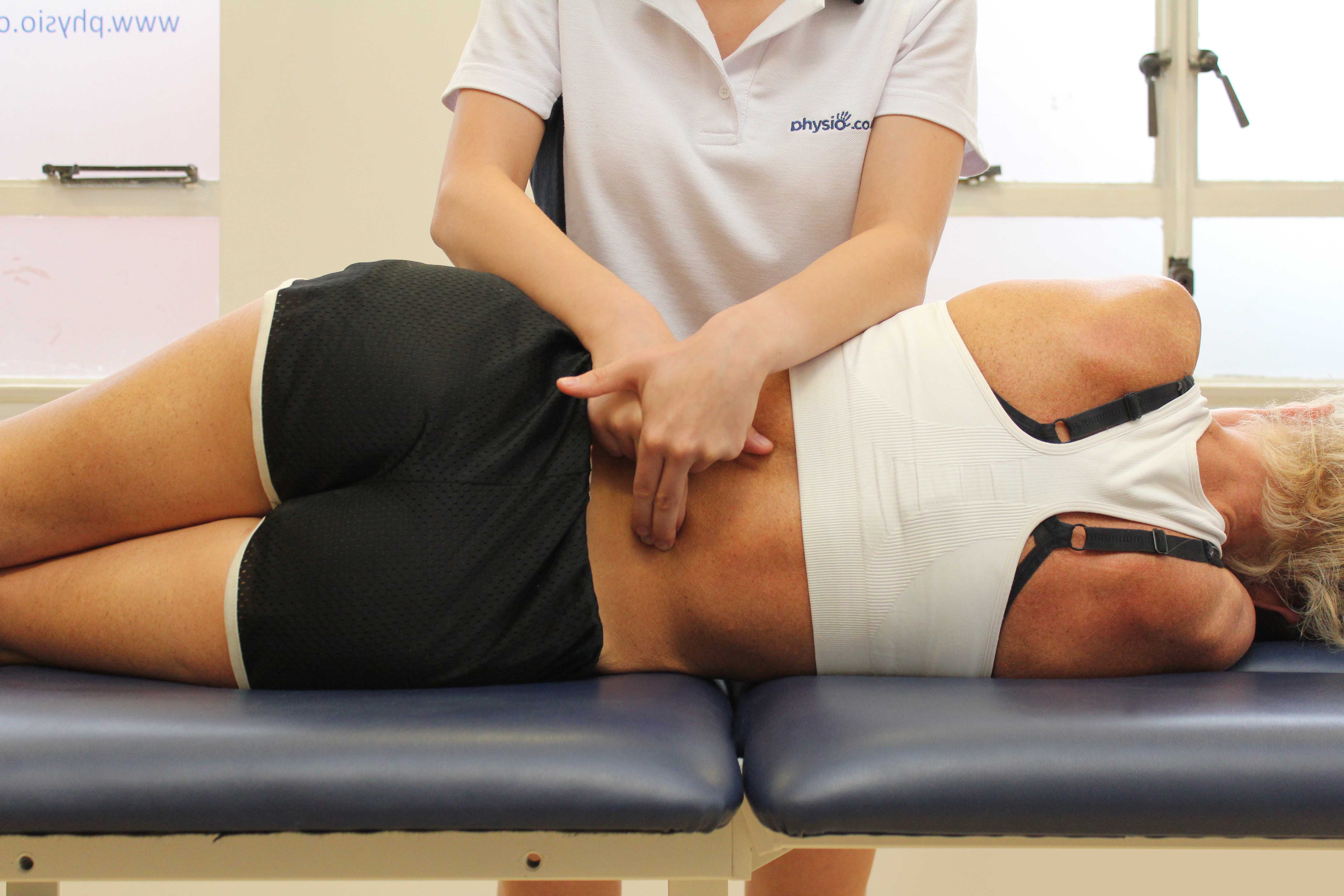Rehabilitation with a Prosthesis Following an Above Elbow Amputation
An above elbow prosthesis is designed to carry out the function of a missing arm. The prosthesis can vary from a functional arm to a cosmetically appeasing arm depending on patient choice. After amputation occurs the individual is assessed by a team of healthcare professionals (the multi-disciplinary team) to decide if they are suitable for an above elbow prosthesis. The multi-disciplinary team are made up of a variety of healthcare professionals including doctors, nurses, prosthetist, physiotherapists and occupational therapists. Your rehabilitation may be carried out by either a physiotherapist or an occupational therapist.
 Above: Soft tissue massage of the upper arm and shoulder by a specialist massage therapist
Above: Soft tissue massage of the upper arm and shoulder by a specialist massage therapistBenefits of Physiotherapy with a Prosthesis Following an Above Elbow Amputation
The physiotherapist plays a key role in the rehabilitation for an amputee.
The physiotherapist will:
- Teach donning (putting on) and doffing (taking off) the prosthesis.
- Build up muscle strength and power.
- Teach co-ordination skills that will assist with activities of daily living such as dressing and washing etc.
- Try to address any obstacles that may prevent a return to work and previous hobbies.
Stages of Rehabilitation
Rehabilitation will start 48 hours post-operation. The physiotherapist will teach gentle range of movement exercises to promote the healing process. It is vital to start moving the amputated limb as soon as possible after the operation as this will improve the outcome of function with a prosthesis. At Physio.co.uk we will work with the individual to develop a treatment plan and appropriate goals. The physiotherapist will try to re-train the muscles to carry out normal function aiming to achieve the goals set using the prosthesis. Success will often depend on adherence to physiotherapy.
Physiotherapy input can be divided into three main stages:
- Post operation (0-7 days)
- Pre-prosthesis rehabilitation (1 week- 6 weeks)
- Rehabilitation with prosthesis (6 weeks +)
Post-operation (0 to 7 days)
Your physiotherapist will:
- Assess and treat any respiratory complications that may occur post-surgery due to the anaesthetic.
- Encourage you to get out of bed. After any surgery it is important to mobilise as soon as possible as this helps to prevent chest infections and muscles from weakening.
- Teach gentle arm exercises to perform in bed, promoting healing by improving circulation to the amputated limb.
- Give advice on stump care and education on pain relief, phantom limb pain and phantom sensation.
Prosthesis Rehabilitation (1 week to 6 weeks)
Your physiotherapist will:
- Progress exercises, aiming to stretch the muscles which have been altered during surgery trying to prevent contractures (shortening of muscles). If contractures were to occur it may make it more difficult to fit and use a prosthesis.
- Teach you techniques to cope with phantom limb pain.
- Progress upper limb strength as alternative muscles will now need to work harder to compensate for the loss of limb
- Teach general fitness exercises due to the stay in hospital exercise tolerance may have reduced and general deterioration could have occurred.
- Teach donning (putting on) and doffing (taking off) the prosthesis.
Rehabilitation with a Prosthesis for an Above Elbow Amputation (after 6 weeks)
Rehabilitation will either be carried out by an occupational therapist or a specialist hand physiotherapist. Rehabilitation with a prosthesis will start when the stump has healed sufficiently, with the duration varying amongst individuals. The swelling around the stump will need to be minimal to fit inside the prosthesis and to prevent the breakdown of the wound site. Normally you receive your prosthesis 8 weeks post-operation which should be sufficient time to allow the stump to heal.
Your physiotherapist will:
- Teach new skills enabling particular tasks to be completed using one hand or they will modify activities making the best use of the prosthesis.
- Progress learned skills with the prosthesis and also performing vocational tasks aiming to return to previous employment if realistic.
- Teach exercises to stretch the muscles around the shoulder and elbow joint as it can take up to 6 weeks for physiological changes to occur.
- Progress strengthening exercises, aiming to optimise function with the prosthesis.
- Continue to build up overall body strength and fitness levels to minimise the effects of the missing limb.
Summary
The therapist will play a key role in the rehabilitation process for an above elbow amputation. At Physio.co.uk we will carry out a full assessment and develop a treatment plan tailored to meet your needs. Losing a limb is an emotional experience and with professional help recovery is optimised. Physio.co.uk will work hard to maximise your potential and minimise any problems that may occur throughout the rehabilitation programme. To arrange an assessment please call Physio.co.uk on 0330 088 7800 Or alternatively, book online today!.

 0330 088 7800
0330 088 7800

































